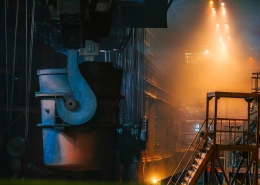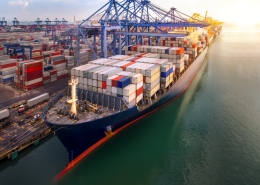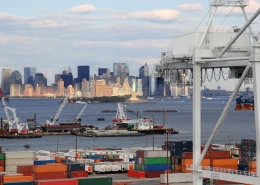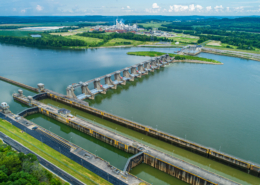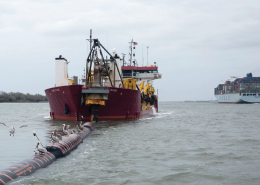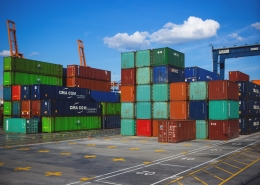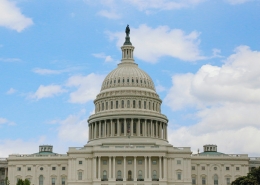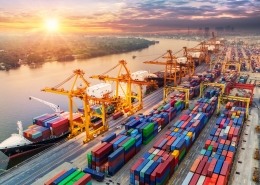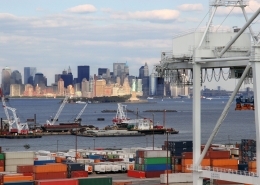In the midst of National Trucking Week, the House Subcommittee on Highways and Transit met to discuss the growth of autonomous trucking in the US, as part of the larger subcommittee goal of evaluating methods to improve supply chain issues.
On Wednesday, September 13th, Subcommittee Chair Rick Crawford (R-AR) convened the committee to hear testimony from the following witnesses:
- Chris Urmson, Co-Founder and Chief Executive Officer, Aurora Innovation, Inc.
- Jeff Farrah, Executive Director, Autonomous Vehicle Industry Association
- Chris Spear, President and Chief Executive Officer, American Trucking Associations
- Cathy Chase, President, Advocates for Highway and Auto Safety
Many Americans are familiar with the supply chain crisis which hit with the onset of COVID-19 as uncertainty, coupled with complete shifts in consumer behaviors, took hold. The sight of empty shelves in grocery stores became commonplace, and supply logistics experts scrambled to find solutions. Potential improvements to the supply chain are numerous and have included things like nearshoring operations to the US and Mexico, but a main issue within the supply chain crisis was, and continues to be, shipping industry labor shortages. As we continue exploring ways to smooth supply chain snags, the conversation around moving goods via autonomous trucking has only grown.
Chairman Crawford began the hearing discussing many of the supply chain issues and citing numerous, oft repeated throughout the hearing, statistics related to the trucking industry. Listeners were reminded that more than 70 percent of the nation’s freight tonnage is moved by truck, and more than 80 percent of communities receive goods exclusively by truck. And while the current labor shortage of approximately 78,000 drivers seems daunting, some estimates conclude that around 1.2 million new drivers may be needed over the next decade to keep pace with ever increasing demand.
Opening statements from Chairman Crawford, subcommittee ranking minority member Eleanor Holmes Norton (D-DC), and full committee ranking minority member Rick Larsen (D-WA) set the focus for the hearing and made it apparent that the discussion for the day would fall into a few buckets – safety, labor, innovation and economic competitiveness, and data and cybersecurity.
Safety
While the COVID-19 supply chain crises seen in recent years have exposed significant vulnerability, the country has been grappling for far longer with challenges relating to traffic fatalities on US roadways. As autonomous vehicle technology has been described as a means to address this growing problem, it is unsurprising that safety was a central theme to each testimony provided.
Jeff Farrah, the Executive Director of the Autonomous Vehicle Industry Association, reiterated multiple times that in the more than two years since the US Department of Transportation (USDOT) began requiring AV companies to report any incident with autonomous driving technology engaged, there have been only 14 reported incidents. Chris Urmson, the Co-Founder and CEO of Aurora Innovation Inc., rattled off information about the number of crashes on I-45, which could have been avoided if an Aurora autonomous truck were operating in those situations. Each industry stakeholder repeatedly reiterated that safety is a central tenant to all operations.
While the potential for autonomous trucking is promising, there were more than a few safety skeptics in the room, including the safety advocate on the panel of witnesses. Cathy Chase, the President of Advocates for Highway and Auto Safety pushed back on many of the points made within the testimony of fellow panelists. Chase opposed the idea that our public roadways should be used as testing grounds for autonomous technologies citing unproven technology. She pointed to the extensive issues early adopters of autonomous technology like the City of San Francisco are already facing and noted that the public information available on autonomous trucking incidents carries significant redaction, which limits the ability of the public to assess actual safety records.
Perhaps Norton captured much of the hesitancy in the room in stating, “The bottom line cannot be saving money. It must be saving lives.”
Labor
This hearing touched on the longstanding friction between technological advances and labor protection, as these advances have often been accompanied by the depletion of certain industry jobs. The recurring narrative as it pertains to technological progress is that these advances will create different jobs, rather than depleting them. This back-and-forth held true for this hearing.
Member after member spoke up on the impacts of technology to the trucking industry and their communities. Most of them asked simple questions about whether the AV industry panelists would be willing to look a trucker in the eye and promise their job would not be at risk. A few, such as Rep. Mike Bost (R-IL) even vocalized concerns that autonomous trucking could price out small trucking businesses due to the high price tag of autonomous trucks, associated equipment, and ongoing tech support required.
AV industry representatives on the panel maintained their resolve that this technology could not deplete jobs given the severe current labor gap and compounding future need. Additionally, furthering the idea of new jobs emerging, Urmson provided specific examples of workforce development activities in which Aurora is engaged, detailing partnerships with Pittsburgh Technical College and Gallatin College in Bozeman for programs like fleet support and sensor technician trainings. And Spear, President and CEO of the American Trucking Associations, plainly stated that “displacement is a myth.” He later slightly backtracked to clarify that he did not say people were guaranteed a job, but he did not see jobs being threatened by innovation.
Innovation and Economic Competitiveness
With centuries of cutting-edge technological advances under our belts, the US has maintained its status as a global leader through this competitiveness. Innovation is a trial-and-error process, constantly evolving to a slightly better version of itself.
While there are tradeoffs in finding the middle ground within regulation and progress, there seemed to be a consensus that the need to maintain the US position within the global market is critical. It requires technological advances and innovation, even with the potential risks and changes to labor markets. Congress has previously discussed lagging behind other countries in the past on technologies such as semiconductors and automated technology, and this is not a desired trend. During his allotted time for questions, Rep. Eric Burlison (R-MO) posed the question which seems so simple in hindsight, “Should Eli Whitney not have invented the cotton gin?”
Data and Cybersecurity
There are relevant, and justified, concerns about data and cybersecurity in our highly technical world. Throughout the hearing, numerous members posed questions related to how AV trucking companies will maintain the security of their data, including light detection and ranging (LiDAR) images as well user data.
Additionally, many questions were geared toward how these companies can truly ward off cyberattacks in the form of vehicle hijackings. Rep. Derrick Van Orden (R-WI) referenced the widespread consumer impacts of the JBS meatpacking system in recent years and probed the panelists from the AV industry to consider how long we could survive if there were a widespread attack on autonomous commercial truck movement, bringing the entire sector to an immediate halt.
Considering the implications of a widespread attack certainly gave many pause, but the AV representatives provided information related to security practices to reinforce the idea of sound data and cybersecurity practices. For example, Aurora employs a team of about 50 individuals dedicated to cybersecurity who regularly run checks to ensure there are no leaks. Regardless of current practices, the room seemed mostly resolved that AV trucking is not prepared to begin transporting hazardous and other high-risk goods and materials.
What Can Congress Do?
As is the case with many policy areas, there seemed to be a shared vision of the use of this technology with differing thoughts on how to get there. Some proposed solutions focus on improvements to our current system, with modest steps forward related to autonomy, while others believe in taking more aggressive strides to reap the rewards of autonomy sooner.
Cathy Chase proposed actions which can be taken now to enhance safety in the trucking world, while methodically preparing for a future autonomous world. Proposed safety improvements included requiring various pieces of equipment (i.e., automatic emergency breaking, underride protections on the sides and the rear of each truck, and speed limiters), as well as doing away with the exemptions to electronic logging device (ELD) requirements to ensure drivers are following legal hours. Chase provided several policy considerations to moving forward with safe AV trucking operation, including: federal performance standards, requirements for trucking companies to report crashes involving fatalities and property damage, publicly collected and available data, commercial licensure requirements, mandates for additional operating authority for driverless trucks, and the rejection of mass exemptions.
For the autonomous trucking industry, there were three major needs within the trucking space: (1) Given that NHTSA has a more active role with passenger vehicles, trucking companies would like for a greater level of engagement by the Federal Motor Carrier Safety Administration (FMCSA) in NHTSA’s oversight of autonomous vehicles; (2) many would like to see FMCSA post a Notice of Proposed Rulemaking to allow those within the industry to submit comments and obtain answers to questions; and (3) the industry would like to see the development of a national framework that encourages development, testing, and deployment of this technology without concern for having to meet the regulatory requirements of 50 separate states.
Moving Forward
While the issues needing to be addressed within the automated vehicle industry are numerous, in the face of climbing demand and labor shortages, autonomous trucking has emerged as a way to address these issues, improve quality of life (for truck drivers and Americans alike), and move the US forward as it pertains to economic competitiveness within the automated technology sphere.

